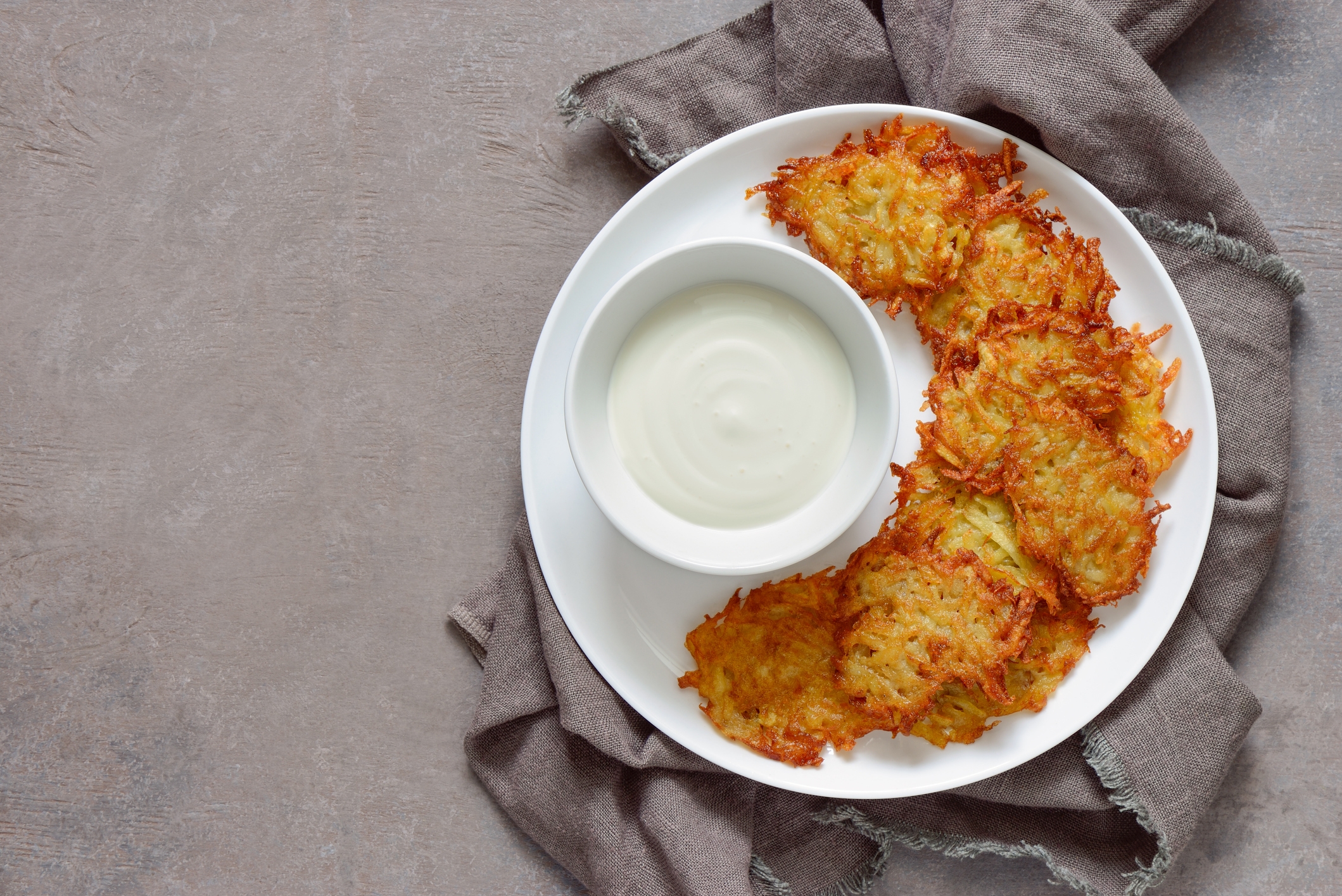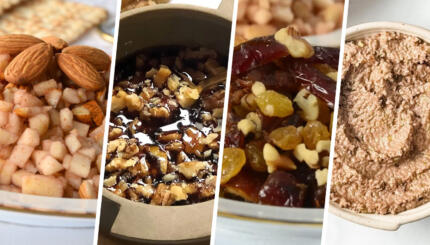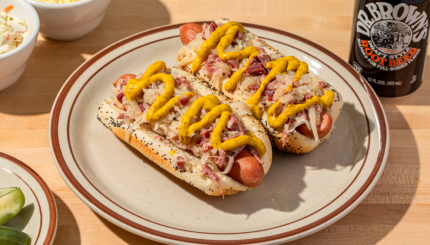Several years ago, I invited my new boyfriend to Yom Kippur at my aunt’s house. He didn’t need convincing – I think he adored my family early on – but to entice him further I made sure he knew what was on offer.
Bagels. Cream cheese. Lox.
Let’s just say he showed up on time. I knew my aunt would be thrilled when he devoured the pickled herring. (He earned similar accolades when he asked for seconds of gefilte fish at Passover.)
Jewish food, he says, is just a hop, skip and a jump from the Scandinavian food he grew up with. “It’s like the foods of my people. Foods of your people, foods of our people.”
The Nosher celebrates the traditions and recipes that have brought Jews together for centuries. Donate today to keep The Nosher's stories and recipes accessible to all.
Apart from being poetic, it was a very Jewish thing for him to say.
Now my husband, Brad is definitively non-Jewish by all religious standards. His father was raised in a big Irish Catholic family and his mother, raised in the Midwest, is of Scandinavian descent. He was the first non-Jewish person I’d met with his own proclivity for pickled fish and smoked salmon.
Among the items he always kept in his pantry — before he met me and still today — are tinned fish and Triscuits, often eaten as a meal. He and I have been on a year-long journey of finding the best “real rye bread” within driving distance in the greater Metrowest area of Boston. (Haven’t found it yet.)
To say that he embraces all things Jewish is obvious. That he loves me is only part of the reason; another is the food.
My grandmother always had enough food to feed an army, no matter whether it was Shabbat, Passover or Tuesday. I watched as Brad became accustomed to the foods we loved and the leftovers we take pride in sharing: the containers left on the table after Yom Kippur for extra brisket, the paper bags for challah and rugelach.
But he’s taught us about food, too. Our family text chain is called “Smashburgers Unite” because of my family’s newfound favorite meal, brought to us by my husband. A better cook than I (a generous understatement), he loves cooking projects.
At that point, my biggest cooking project I’d taken on was making latkes for Hanukkah.
It had been my job for years. I’d shove the potatoes in the Cuisinart, wring them out as best I could, and do my best guesswork with how much egg, matzah meal, onion and salt should go in. Then I’d stand at the stove and fry them, the kitchen filling with that wonderful greasy-spoon smell, as the rest of my family arrived. I laid them out as they were done, always in an inadvertent ombre from light to dark as the oil, and my patience, decreased.
So for Brad’s first Hanukkah with us, I told him — who once made a BBQ for 40 people with no help from anyone — that I (and, by proxy, he) was in charge of latkes.
“Cool,” he said. His indifference both alarmed and relieved me.
“It’s more work than you think,” I said.
I should have known he’d have better tricks for peeling massive amounts of Russet potatoes and draining their water (cheesecloth! The man I’m dating owns cheesecloth?!), adding cornstarch to help the eggs adhere better to the mix, and adding enough salt so they actually tasted good. He added seasonings like zaatar, onion powder and garlic powder. He showed me how to wait until all the oil – way more than I was used to adding for frying – was shimmering, and to be patient while each side cooked.
I think he wanted to add a shallot.
“It’s not traditional,” I said.
“So?” he said.
He had a point.
The latkes that year were a hit. My family made sure he knew that it was now his task for life. They were joking, but they were also serious.
I knew he was about to take this latke-making to the next level. On the way home, he thought up different flavor combinations, like adding dill and black pepper, and what if we fried them in schmaltz – we’d have to roast a chicken first; store-bought schmaltz wouldn’t cut it – and what if we added cayenne, and what if we used different root vegetables, like turnips and rutabagas, and what if made a sweet potato version?
I was exhausted just thinking about it. The latkes take a great deal of effort, and I don’t have the same love of cooking that Brad does. Where he sees opportunity, I see how long it will take to clean up.
Maybe we buy shredded potatoes, to make it easier? I suggested.
But no: Everything from scratch, no shortcuts. Our first year in our new home together, we made them in our kitchen. He shredded the potatoes, I wrung them out. He set up three bowls with different seasonings and spices. I spooned them into balls, and we’d take turns at the stove, frying, flipping, frying again. We ate several between us right away – impossible not to. Yes, it was an hours-long process. But the pride I felt at bringing them home, measured by the silence while people ate and ate, was unmatched.
I learned that the effort, the planning, the execution: it’s a way of showing love. The energy we put into the latkes as a team made me feel closer, somehow, to the holiday and to my Jewish roots.
That first meal of jointly-made latkes also included my mom’s brisket. Over dinner, the conversation turned to other traditional Jewish foods like corned beef and pastrami. Brad pointed out that they were both brisket, just made different – something we hadn’t really ever thought about.
He mentioned he could make a pastrami.
Our eyes widened.
“It’s just a matter of brining it…then smoking it…”
So we’re in charge of both now: latkes and pastrami.



